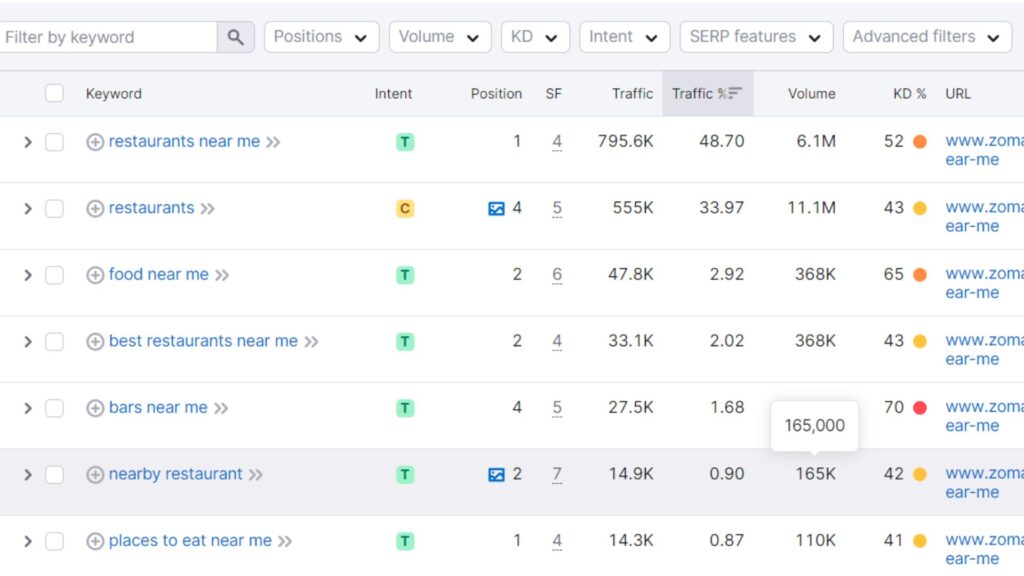Local content plays a pivotal role in every SEO strategy, yet its creation can present significant challenges for local businesses such as clothing stores or bike repair shops. Time, budget, and capacity constraints often impede the implementation of extensive content marketing programs. To follow the recommendation of generating content, many local businesses opt for blogging. However, the outcomes are often less than satisfactory – typically, a handful of articles get minimal readership, perhaps reaching a total of ten individuals.
Content marketing for local businesses encompasses a range of strategies including product or service pages, case studies, client testimonials, and various content pieces meticulously designed to guide individuals deeper into your sales funnel. This content is tailored to address and overcome any query potential customers may have, persuading them to take the next significant step in their purchasing journey.
Local content marketing doesn’t necessarily have to be in a written format. With the prevalence of smartphones and various editing tools, local content can take the form of images, videos, podcasts, or stories featured on your website. The objective is to craft content that contributes to establishing authority and trust with your potential customers.

Your Checklist For Creating Local Content
1. Understanding The Local Audience
Before launching local content campaigns, you must first analyze your target audience’s interests, pain areas, and online behaviours. This foundation enables the development of a content marketing strategy adapted to local specifics of culture and geographical trends.
Here’s how you can deepen your understanding of the local audience:
- Create Customer Personas: Analyze real customer data to uncover shared characteristics like as geography, goals, and behaviors.
- Conduct Market Research: Use resources such as Google Trends to keep track of popular topics and interests in your local market.
- Analyze Competitor Strategies: Look into the approaches used by other local businesses in your niche to see what connects with their customers.
- Prioritize Customer Engagement: Communicate with your current customers to collect feedback on their preferences and desires for your products or services.
- Leverage Social Media information: Use the analytics tools provided by platforms like Facebook, Instagram, and YouTube to acquire vital information about your audience’s demographics, interests, and activities.
2. Conduct Local Keyword Research
Local keyword research is essential for businesses to understand their target audience’s language, optimize website content, and guide digital marketing strategies like pay-per-click advertising and local SEO efforts. This helps boost online visibility and attract local customers
Here are some steps for doing keyword research for local content
- Identify target locations: Determine the specific geographic areas where your business operates or where you want to target customers.
- Brainstorm relevant keywords: Generate a list of potential keywords and phrases that are related to your business, products, or services. Analyze the keywords that competitors are targeting in local search and identify opportunities.
- Use keyword research tools: Utilize online keyword research tools such as Google Keyword Planner, SEMrush, or Moz Keyword Explorer to explore search volume, competition, and related keywords for your target locations.
- Refine and prioritize keywords: Narrow down your list of keywords based on relevance, search volume, competition, and potential for driving local traffic to your website.
- Incorporate keywords into content: Integrate the selected keywords naturally into your website content, including titles, headings, meta descriptions, and body copy.

3. ‘About’ Content
A paramount objective for any local website should be to present your business authentically, fostering a sense of acquaintance, affinity, and trust among potential customers. Utilize your website to introduce key elements:
– Delve into the unique story of your company.
– Highlight aspects that distinguish you from national brands or local competitors.
– Clearly articulate the nature of your business and the range of services or products you offer.
– Express the driving force behind your business, emphasizing your mission and values.
Contents for unveiling your company’s story- ‘About Us’ Page, company beliefs, company history, team, careers page etc.
4. Products & services
Capturing the attention of potential customers embarking on a quest for specific products or services typically begins with Google. Your primary objective is to optimize your service page or product to feature prominently in their search results.
A common misstep observed among local service businesses is consolidating all their services onto a single page. Consider, for example, an exterior remodelling company that confines details about roofing, siding, windows, doors, and decks to a solitary page, often presented in a condensed paragraph or, in some cases, a bulleted list.
To enhance your online visibility and user experience, it’s imperative to transcend this approach. At the very least, each service you offer should merit a dedicated page. For optimal results, delve deeper by crafting specific pages for sub-services. This expansion ensures that your online presence aligns precisely with what potential customers are seeking, offering a comprehensive and user-friendly exploration of your diverse service offerings.
Here are some additional types of local content that can be created for your business:
- Local Angle: Identify services exclusive to your region. Provide insights, restrictions, or specific details about your services within your target market. For instance, Pest control companies can spotlight the most common pests in their region, and builders may highlight local building codes.
- Your Expertise: Gather insights from your sales team, technicians, or customer service representatives to understand common challenges people face and why your solution is superior. It’s crucial not to delegate your service page entirely to an agency, freelancer, or ChatGPT, as authentic expertise sets your content apart.
- Brands: Feature content related to the brands you carry or prefer in your store. This type of content aids local ranking for brand-specific searches. Address questions like What makes these brands superior? How long has your business collaborated with them? Why do you favour these brands?
5. Validation
Any business can assert its merits online. The distinction lies in how exceptional local websites not only make claims but substantiate them through social proof.
Social proof leverages psychological principles to prompt action based on others’ actions. In essence, it demonstrates that prior customers have chosen your services and are content with the outcomes.
Several effective methods exist for showcasing social proof on your website:
- Testimonials: Featuring testimonials from past customers allows potential clients to hear about others’ positive experiences. These testimonials serve to address queries, dispel uncertainties, and foster trust with prospective customer
- Case Studies: Essential for illustrating your work to the customers. Tailor your approach based on your industry, considering options like- case studies (B2B), featured projects, “Before and after” snapshots, galleries etc.
- External Recognition: Bolster your credibility by incorporating trust symbols on your site, an often overlooked form of social proof. Highlight industry awards, certifications from manufacturers, and local business accolades to distinguish yourself from competitors in your vicinity.
6. Pricing
Talking about how much things cost can be a tricky subject, especially for businesses that offer services in local areas. We get it—there are good reasons why you might hesitate to share the prices of your services on your website.
But here’s the thing: People who might be interested in what you offer are often looking for pricing information. The real question is, do you want to be the one guiding the conversation about prices and helping them understand the value, or do you want your competitors in the same town to do it?
Even if you can’t give exact prices on your website due to the complexity of your services, there are ways to talk about pricing more generally. This not only helps keep things clear but also makes sure potential customers have a better idea of what to expect. It can also improve the quality of leads by making sure everyone is on the same page. Here are some simple ideas for talking about prices in your content:
- Give a Range: Instead of exact numbers, you can share a range of prices. People who research online usually want a rough idea, not the exact cost. This can work well when combined with examples of your past projects.
- Break Down the Costs: Explain what goes into deciding the cost of your services. Talk about the different factors that make something cost more or less.
- Extra Costs: Be open to any extra fees that might be added to the overall cost, like taxes, permits, or delivery charges.
- Explain Different Prices: If you notice that other businesses charge more or less than you do, take a moment to explain why. It’s a chance to show why your services might be worth a bit more and why that matters.

Conclusion
Making local content isn’t about churning out loads of low-quality pages just to manipulate search results. It’s also not about creating short blog posts that nobody bothers to read. It’s all about presenting your company in the best way possible to both Google and the people who might become your customers. By doing this, you’re not just giving people the information they’re looking for; you’re also showing that your business is clear, honest, and unique in your local area.





